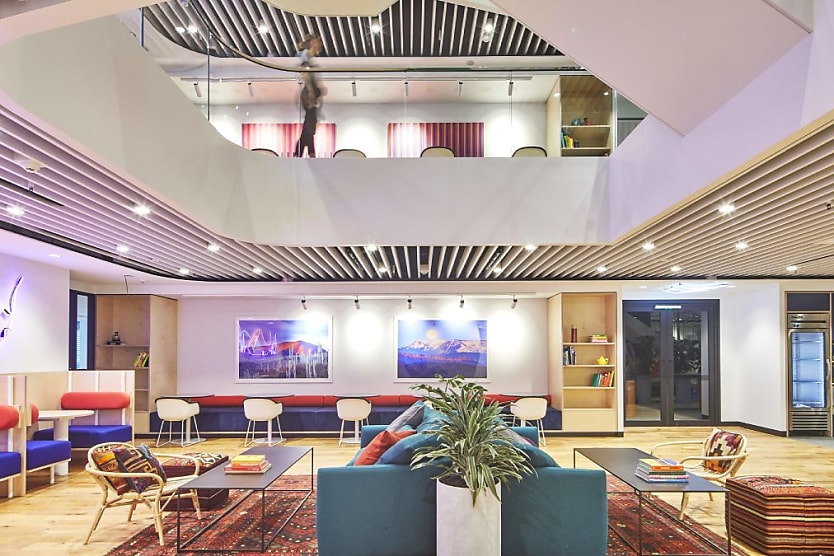How rituals can build connection and boost employee engagement
SHARE THIS ARTICLE

As companies large and small adapt to new ways of working, the role of workplace rituals is becoming increasingly critical as a tool to help maintain company culture while also attracting and retaining top talent.
Research from the Harvard Business School has shown that some rituals have led to a “16 per cent increase in how meaningful employees judged their work to be”.
As a leader, customising rituals and implementing bespoke programming both at the macro (organisational) and micro (team) level is a way to regularly – be it weekly, monthly, quarterly – bring people together while being supportive of flexible work schedules in a distributed team.
Maintaining connection in a hybrid world
We’ve seen a change in what employees are expecting from their leaders.
According to a PwC report from last year, 22 per cent of Australian employees value support of their wellbeing above all other factors, and 16 per cent value the experience (which PwC noted included things like “culture, diversity and inclusion, support and relationships”) above all.
At the same time, an evolving landscape characterised by a global talent crunch and macroeconomic uncertainty is forcing people managers to recognise that while employees need choice and autonomy in where and how they work, as human beings, they are also craving connection and seeking out opportunities to collaborate in person or come together with greater intention.
This is where rituals and intentional planning comes in.
The shifting role of the office
For organisations wanting to naturally attract employees back to the office, creating an appealing proposition and really “earning the commute” is essential. This year, as companies have started to implement their return-to-office strategies, many are adopting a hybrid model, dedicating a few days in the office and a few at home, and looking to the office to be where they connect and re-engage in-person with their colleagues.
Employees come to the office to collaborate, workshop ideas, learn and be mentored, so deliberately creating opportunities for team bonding, through social events or programming is integral to the employee experience.
With company culture being so critical to the employee experience, carving out time with the team to pause, reflect, socialise or celebrate is key. For example, with my team, we are focused on creating intentional moments that matter throughout the working week, month and quarter. By developing meaningful opportunities for our team to come together and connect, be it through weekly breakfasts and happy hours, end-of-month pizzas and birthday cake celebrations or regular “all hands” and strategic offsites, we create a familiar cadence of connectivity that everyone looks forward to and plans for.
And it is these regular, intentional rituals that also ensure hybrid teams feel more connected to the wider team’s culture, goals and mission of the company.
Resetting the dial on culture
Increasingly, employees join a company because they believe in its mission and values.
In the last three years, the pandemic has meant team members have had less opportunity to come together in person. The impact has been particularly noticeable for new starters and younger talent kick-starting their careers.
As restrictions have eased and companies have begun experimenting with remote-first or hybrid working schedules, doubling down on in-office routines and rituals, such as social events or creative strategy sessions, act as an anchor point for otherwise distributed employees.
With this, having access to the right amenity-rich space is as important as setting the ritual in the first place. The 2021 Hybrid working 2.0: Humanising the office report by Swinburne Edge found that prioritising tech-free zones for collaboration and social interaction alongside a mixed-use design approach that centers around “active” and “focus” areas can aid in facilitating a rich employee experience on days spent in the office.
Continuing to engage staff via regular consultation is critical to the success of culture-building rituals that will “stick”. Looking ahead to 2023 provides an opportunity for business leaders to make systemic changes in the way they approach workplace strategy and embed a sense of intention in the company’s ways of working moving forward.
Jessica Gilroy is the head of ANZ sales at WeWork.
RELATED TERMS
Employee engagement is the level of commitment people have to the company, how enthusiastic they are about their work, and how much free time they devote to it.
In a hybrid work environment, individuals are allowed to work from a different location occasionally but are still required to come into the office at least once a week. With the phrase "hybrid workplace," which denotes an office that may accommodate interactions between in-person and remote workers, "hybrid work" can also refer to a physical location.
